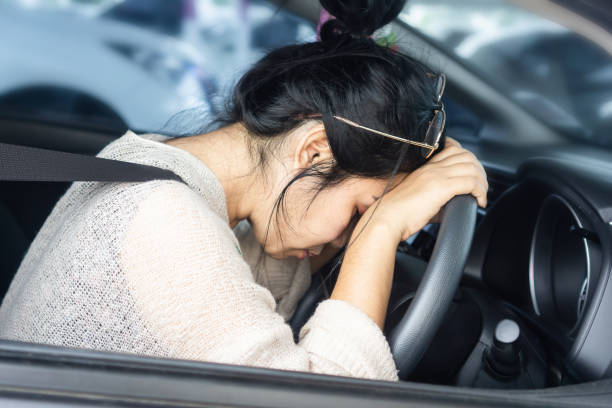The promise of travel and adventure on the open road beckons. Car travel gives an unparalleled sense of independence for many tourists, especially those on a budget or seeking spontaneity. However, exhaustion might taint the excitement of the trip. Pulling over for a little snooze can be the difference between arriving safely and having a catastrophic accident since drowsy driving poses a severe risk to public safety.
This is the situation with vehicle sleeping. Some states allow more latitude in this regard, while others have regulations that prohibit the practice. If your road trip schedule includes a stop in North Dakota, you may be wondering if it’s legal to sleep in your car there.
This thorough tutorial will explore North Dakota’s laws pertaining to automobile sleeping. We’ll go over acceptable and safe places to sleep as well as helpful hints for a safe and secure overnight stay. For those looking for a more conventional bed for the night, we’ll also look at other possibilities.
Can You Sleep in Your Car in North Dakota?
In contrast to several states that have laws specifically prohibiting sleeping in cars, North Dakota has good news for tired travelers. Car sleeping is not currently prohibited on the entire state. This implies that there are often no legal ramifications if you stop and take a nap in your automobile.
But it’s vital to keep in mind that location is very essential. Although generally speaking there are no limits on automobile sleeping, there may still be local laws and property owner guidelines that must be followed.
Finding Safe and Legal Spots for Car Sleeping in North Dakota
- Rest Areas: Your Best Friend on the Road
Travelers looking for a quick nap or overnight respite might find a haven in North Dakota’s well-maintained network of rest spots. Basic facilities including picnic tables, bathrooms, and occasionally even vending machines are available at these locations.
In North Dakota, several well-liked rest stops for RV camping include:
- State Parks and Campgrounds: For a More Nature-Immersed Experience
North Dakota is a veritable gold mine of scenic beauty, and its state parks and campgrounds present a singular chance to blend camping in the great outdoors with vehicle camping. While some campgrounds only provide paid campsites, others let you camp in more remote areas and often charge less for dispersed camping, where you can find a quiet place to leave your car overnight.
These two state parks in North Dakota are ideal for spending the night in a car:
- Walmart Parking Lots: A Common Courtesy with Local Variations
RVs and, occasionally, cars are welcome to park overnight at any one of the many Walmarts located across the country. Walmarts in North Dakota are typically thought to be car-sleeping friendly, with the Fargo and Bismarck sites being regarded to be more accomodating.
It’s important to keep in mind, though, that individual business managers may choose to prohibit overnight parking. Prior to spending the night, always make sure to consult with the store management. To find out their policies, look for signs or contact a customer care agent.
- Casinos and Truck Stops: Consideration with Possible Restrictions
There are occasions when truck stops and casinos provide good places to sleep in cars, particularly if they have spacious, well-lit parking lots. Approach these areas cautiously, though.
A few casinos may employ security guards that drive about and check on cars left overnight. There aren’t many amenities and they might be loud at truck stops. Before you settle down, it’s advisable to find out about their overnight parking policies.
Etiquette and Safety Tips for Car Sleeping in North Dakota
While there is considerable leeway for vehicle sleeping in North Dakota, it is still important to prioritize safety and adhere to local laws. The following are crucial pointers to guarantee a safe and easy car-sleeping experience:
The intention is to stay out of the way of unwelcome attention. For better ventilation, keep your automobile windows slightly rolled up, and steer clear of strong lighting inside.
Give visibility first priority. If security cameras are present at rest areas or campgrounds, park in well-lit places with good sightlines.
Regardless of the locale, this is a fundamental safety measure. Make sure all windows and doors are safely locked, and keep valuables hidden.
While there s no statewide ban, some cities or towns might have local ordinances restricting overnight parking in specific areas. Consult your local law enforcement about any applicable regulations.
Follow your gut and move to another area if you feel uneasy or unsafe there. Moving to a more secure location for a restful night’s sleep is perfectly acceptable.
Alternatives to Car Sleeping in North Dakota
While car sleeping can be a budget-friendly option, it might not be for everyone. Here are some alternatives to consider for those seeking a more traditional bed for the night:
North Dakota s major cities like Fargo, Grand Forks, and Bismarck offer a range of hostels and budget motels catering to travelers on a tight budget. These options provide basic amenities like a bed, shower, and sometimes even Wi-Fi, often at a reasonable price.
For nature enthusiasts, camping offers a chance to connect with the outdoors while enjoying a good night s sleep. North Dakota has a variety of state parks like Lake Sakakawea State Park or Fort Abraham Lincoln State Park with designated campsites available for a nominal fee.
Conclusion
Car sleeping in North Dakota can be a viable option for weary travelers, offering a safe and legal way to catch some rest on the road. By prioritizing location, following safety tips, and being mindful of local regulations, you can ensure a comfortable and secure overnight experience.
However, remember that car sleeping might not be for everyone. For those seeking a more traditional bed, explore alternatives like budget motels or camping.
Ultimately, the key to a successful road trip in North Dakota is planning and preparation. By considering your needs and budget, you can find the perfect way to rest and recharge, allowing you to fully experience the beauty and adventure that North Dakota has to offer.





























